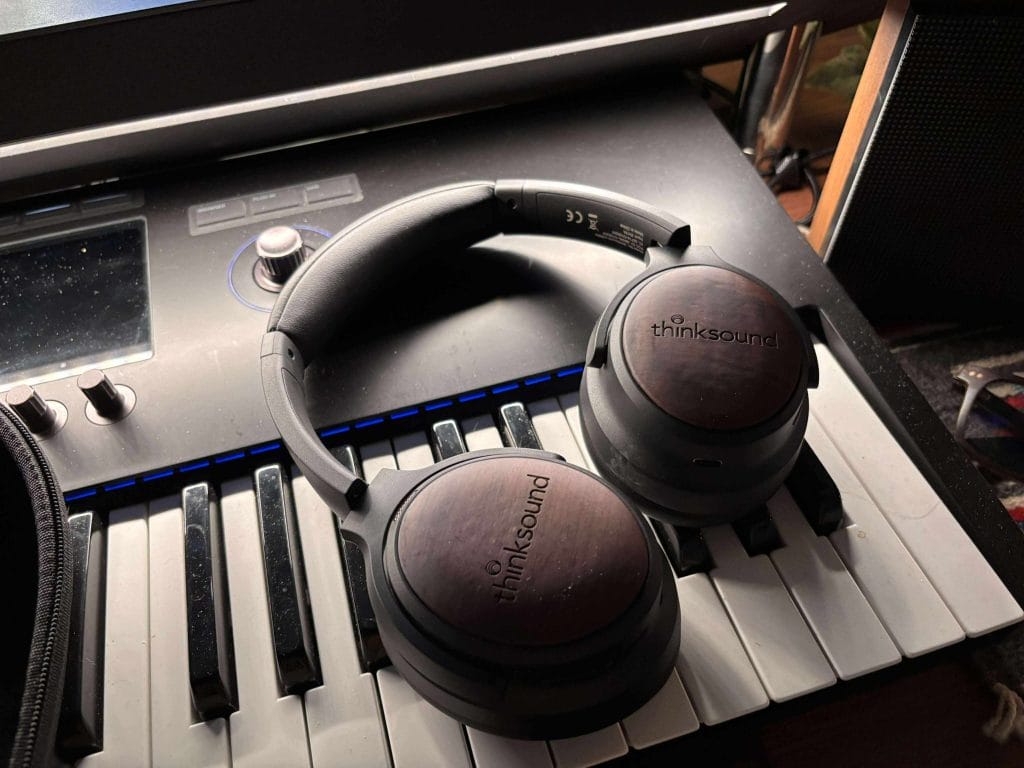
Thinksound’s OV202w Are Surprisingly Practical—and That’s Why I Keep Reaching for Them [Review]
Table of Contents
There are very few wireless headphones that I actually reach for consistently, and even fewer that manage to blend practicality with a sound profile I don’t have to constantly EQ. The thinksound OV202w was a bit of a wild card when I first saw it pop up—compact design, wooden accents, and a dual-driver setup that claimed over 100 hours of listening time and honestly, from a brand I wasn’t too familiar with (which always surpirses me, since I’ve been reviewing headphones from it seems like hundreds of brandso over the last five years at Magnetic).
Normally, I’d brush off battery claims like that as marketing fluff since I’m rarely ever without access to a charger or the need ot listen uninterrupted for the number of hours the headphones claim to allow for, but these held up far better than I expected which brought about some unique use cases no doubt.
After using them across long days of work, music sessions, travel, and casual listening, I came away with a clear opinion: this isn’t a category-leading product in any one area, but it’s the kind of headphone you keep around because it keeps delivering. No gimmicks, no over-engineered features, no forced app integrations. It’s a good backup to your more preium headphones or a solid toss-around-the-house brand that you can use while mowing the yard, walking the dog, or at the gym
The build, battery, and overall tuning come together in a way that actually works for real-world usage—not theoretical studio perfection. I’ve got a few gripes, and I’ll get to those, but this is one of the few Bluetooth headphones that earned a permanent spot on my shelf.
Comfort and Build
I tend to wear headphones for hours at a time, so if something causes pressure after an hour, it’s immediately out of rotation. These passed that test easily. The padding on the OV202w is soft and breathable enough to avoid ear fatigue during extended use. The clamping force is moderate, which helped avoid that overly snug grip that some studio-style cans suffer from.
While the frame is mostly plastic, it doesn’t feel cheap or overly fragile. The wooden faceplates on the cups add just enough structural contrast to keep the design from feeling generic. The headband has a solid amount of memory foam and is wrapped in a soft-touch material. It’s not full leather, but it’s comfortable and doesn’t slip around.
They fold flat for travel, which matters more than I thought. I tossed them in a backpack on a trip, and the included case held up fine. There are still a few corners cut: the buttons feel hollow, and I wouldn’t call the overall construction premium, but the balance of weight, comfort, and durability works. They’re not flashy, and they’re not fragile.
Battery Life
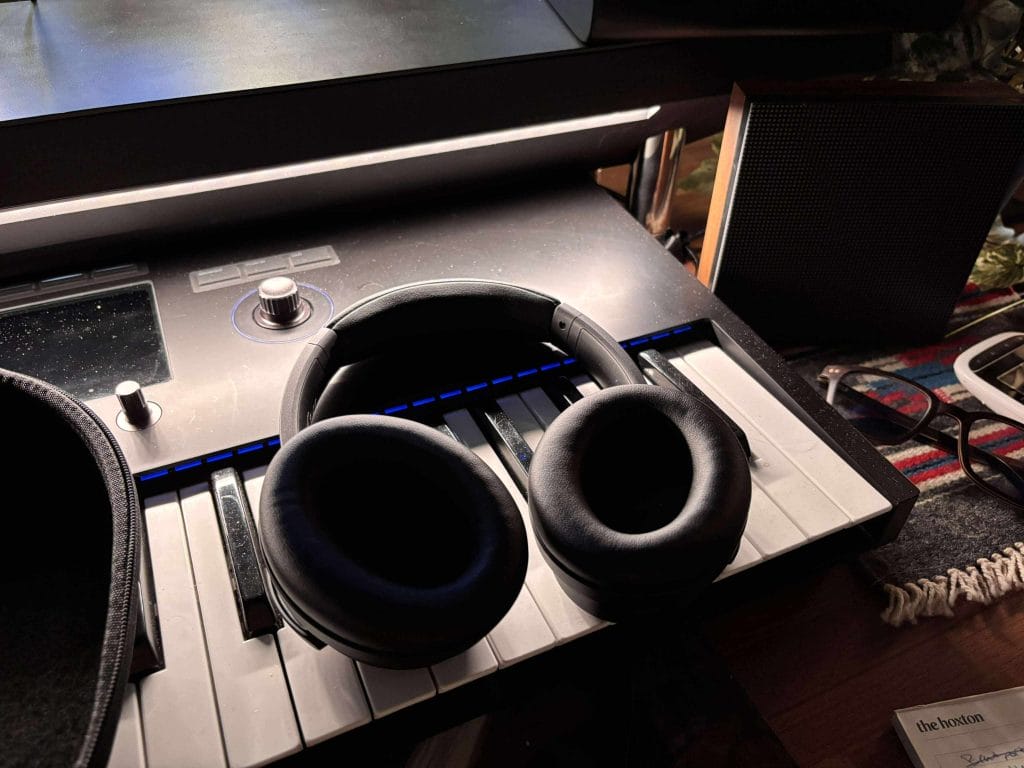
There’s no way around it—this is one of the most impressive parts of the OV202w. I went almost two weeks without charging them. That included multiple days of use during meetings, music listening, and travel. The advertised 100+ hour battery life isn’t a stretch. I hit around 30 hours before I even thought about checking the charge. It didn’t even cross my mind to plug them in until day 10.
There’s no app or on-device display to show the exact battery level, but it turned out to be a non-issue. They lasted so long that tracking the battery became irrelevant. I charged them once, used them for what felt like forever, and charged again weeks later.
I’ve tested plenty of headphones that advertise 30-40 hours but deliver 20 with ANC on. These still had power after multiple full days with ANC active, and that made them feel dependable in a way most Bluetooth headphones don’t.
Sound Quality
I’ve been through enough wireless headphones to lower my expectations by default, especially when a product claims to be tuned for audiophile-level listening but comes in at sub-$200. That being said, the OV202w is one of the few that actually surprised me in a good way. Not groundbreaking by any means, but still punches slightly above its weight class/price point. The dual-driver setup (40mm + 10mm) gives it a more controlled and natural low end than I expected, especially from a closed-back wireless pair.
The tuning leans slightly warm but stays balanced. The lows are punchy without being bloated, and the sub-region has real weight. They don’t push excessive mid-bass like a lot of consumer-tuned headphones. The mids sit comfortably forward, which gives vocals presence without feeling nasal or scooped. And the highs have a smooth roll-off that avoids harshness. No sparkle hype, no artificial top-end gloss.
Compared to my Audeze gaming headphones, these obviously don’t have the same microdetail or sense of space that the Audeze, that cost $100+ more dollars I should mention, have. But for standard Bluetooth headphones, they got closer than they had any right to. For reference checks on the go, YouTube mixing tutorials, or laid-back listening, they felt usable and, more importantly, consistent. I didn’t feel like I had to retune my ears every time I switched back to them.
Noise Cancellation and Transparency Mode
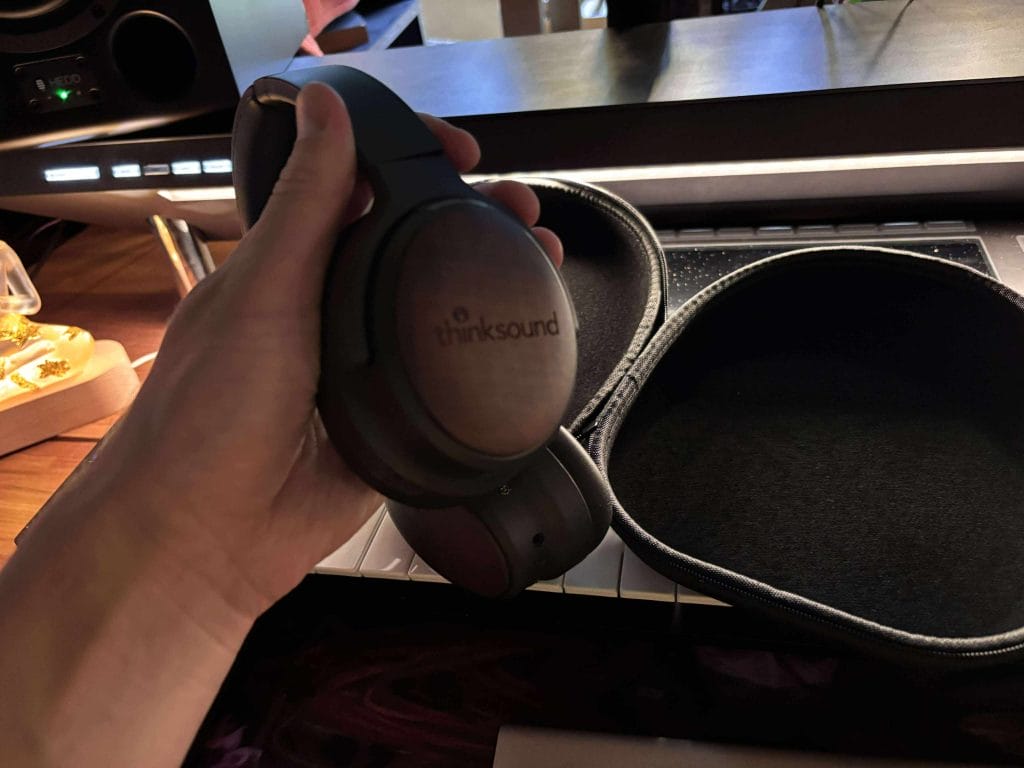
I’ve used ANC headphones that either over-process the audio or barely cancel anything. This one landed right in the middle. It handled low-frequency hums and room tone easily—airplanes, fans, car noise—all reduced without artifacts bleeding into the sound. It didn’t eliminate conversations entirely, but that’s normal. Most ANC headphones struggle with vocal-range frequencies, and these are no exception.
What stood out is that ANC didn’t degrade the sound. I toggled it on and off mid-track several times and didn’t hear a drop in clarity or tone. That’s not always the case, especially with sub-$200 models.
Transparency mode works fine. It lifts the room without going overboard or pushing a weird filtered ambiance into your ears. You’ll hear someone if they say your name, which is all I needed.
Use Cases: Studio, Gym, Travel
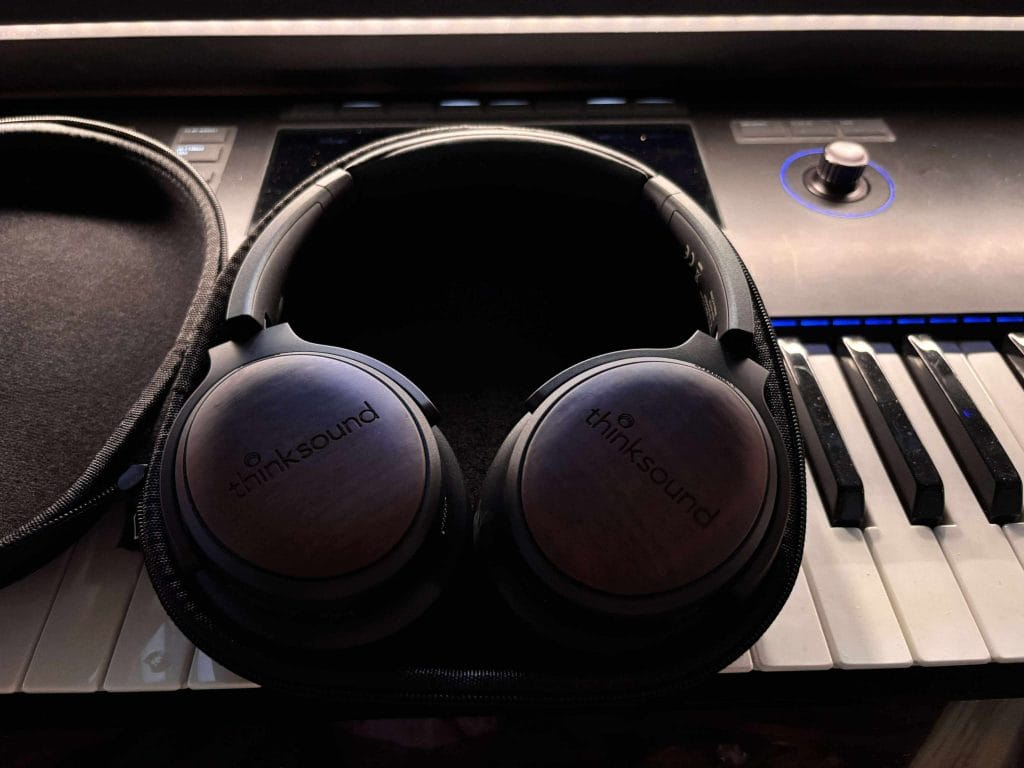
These turned out to be my go-to headphones for non-critical sessions. I wouldn’t mix on them, but I’ve checked arrangements, browsed synth presets, and tested song references without any issues. They’re not trying to be surgical, and that’s the right call.
For gym use, they’re okay. They’re light enough, and the clamping pressure is moderate, but they don’t grip tightly enough for running or HIIT sessions. Fine for walking, stretching, or casual use. No IP rating means sweat might be an issue long-term, so I wouldn’t make these my workout pair.
Travel is where these shine. Fold-flat design, long battery life, real ANC, and no extra dongles or apps needed. I could see them being ideal for long flights, commutes, or just zoning out at the coffee shop (not that I have time for any of that in my current chapter in life, but I blame my newborn for that and could see these being my go-to travel headphones come Miami Music Week time).
Design and Aesthetic Value
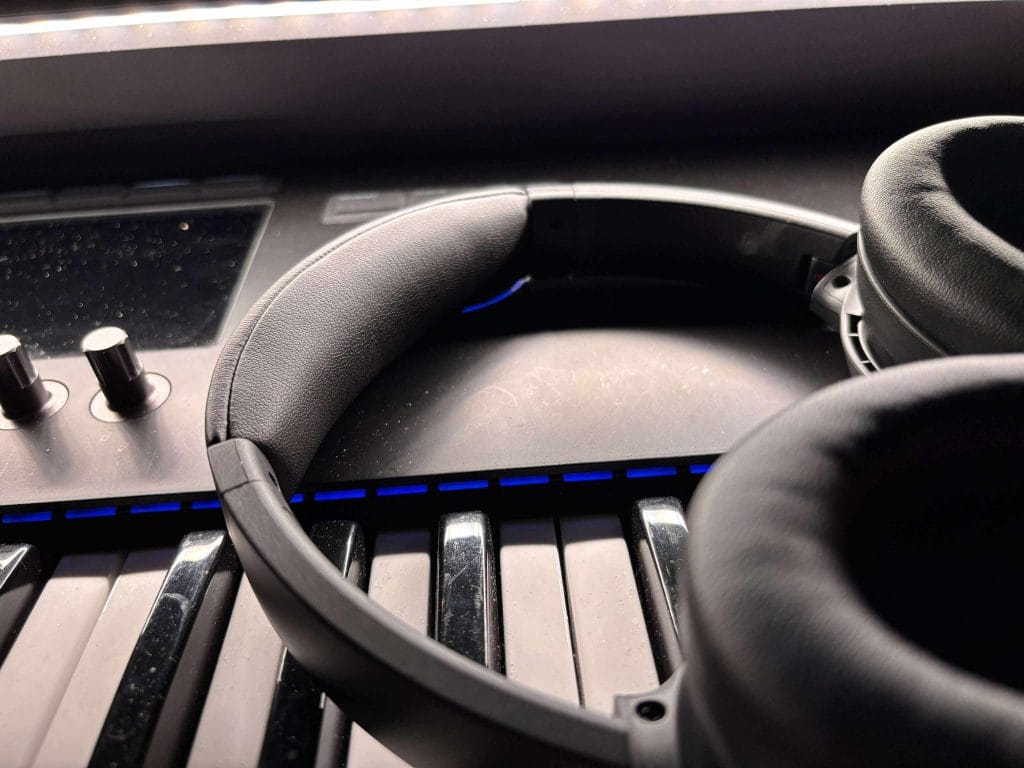
The wooden plates are probably what drew me in first. I’m a big wood-grain guy as basically every single image from my studio will tell me. It’s a subtle choice, but it gives them a more intentional look than the standard matte black shell. The rest of the design is practical—no RGB, no touch gestures, no weird swipe mechanics. Everything’s controlled through physical buttons.
I appreciated that. No accidental track skipping or volume jumps. Just volume up/down, ANC toggle, and power. That’s all I need from headphones like these.
Visually, they look clean in a studio, at a desk, or even on a plane. No bulky gamer styling or weird glossy finishes. You won’t have to explain your headphones to anyone.
Downsides and Missing Features
There are two things I’d change: codec support and build material. First, Bluetooth codec support is limited to SBC and AAC. No aptX, no LDAC. If you’re on an iPhone, that won’t matter much. But if you’re on Android and used to higher-quality streaming, this could feel like a step down.
Second, while the plastic is solid, the button tactility isn’t great. It’s a minor complaint, but I did wish the buttons had more travel or a more satisfying click. You can tell this was one of the areas they saved on to hit the price point.
There’s also no USB-DAC support through the USB-C port, and no balanced output via the aux cable. Not essential, but it would’ve made them even more usable for hybrid setups.
Conclusion
These are the headphones I reach for when I don’t want to think about the gear. That’s the best way I can sum it up. I don’t have to charge them constantly. I don’t have to fight with an app. I don’t have to adjust the EQ to make them listenable. They just work—and they sound good enough to use in a bunch of different scenarios.
They’re not flashy. They’re not premium in the traditional sense. But they hit every spec that matters for wireless headphones: comfort, battery life, functional ANC, and a sound signature that’s musical without being bloated or artificial.
I wouldn’t use them to finalize a mix, and I wouldn’t take them on a sprint. But for the rest of my day—Zoom calls, Tidal streaming, sketching out ideas in Ableton—they’ve been consistently solid. They’ve replaced more expensive pairs in my rotation simply because they stay out of the way and do their job.
For under $200, there aren’t many headphones that feel this usable across so many scenarios. The OV202w isn’t trying to reinvent anything—it’s just built to last, easy to use, and sounds better than it needs to. That’s enough for me to recommend them.



